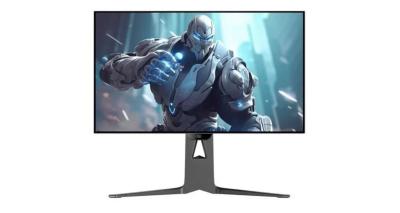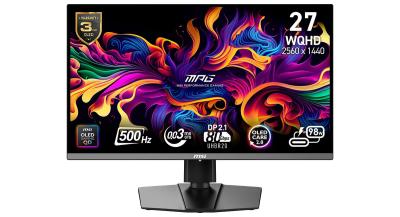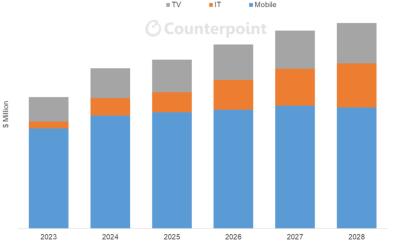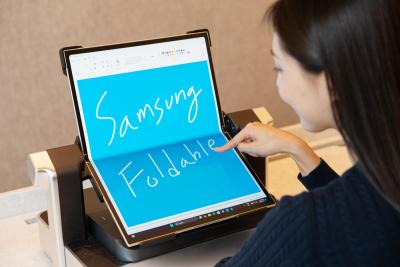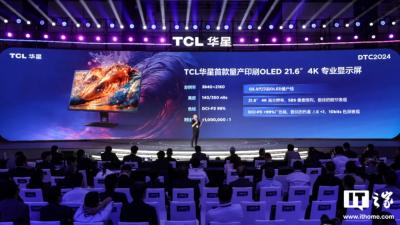OLED monitors: introduction and industry news
OLED (Organic Light Emitting Diode) technology offers bright, efficient and fast displays, outperforming LCD display. OLEDs deliver the best picture quality ever and are used in many devices, from smartwatches through smartphones and tablets to TVs and more.
OLEDs are also used to enable high-end monitors that offer excellent contrast, image quality, colors and new form factors. This article will explain the benefits, the current status and the future of OLED monitors.
OLED monitors vs LCD monitors
- OLED provide a better image quality with a much higher contrast (true blacks), wide color gamut, better viewing angles and a much faster refresh rate (great for gaming!)
- OLED panels are much thinner and lighter compared to LCD panels
- OLED monitors consume less power - as only lit pixels draw energy on OLED displays
- An OLED monitor can be flexible, bendable, rollable - and transparent
Of course OLED technology is not perfect. One of the major drawbacks of an OLED display is image retention / burn-in. In an OLED display each pixel is driven independently and each pixel ages differently - and as brightness is reduced with use (the lifetime of OLED materials is limited), we have burn-in problems.
For mobile phones and TVs this is less of a problem - but in a computer user interface many UI elements are quite fixed (toolbars, icons, etc) which means that burn-in is a real problem. There are some technologies to handle this problem - for example by measurement and compensation, or by adopting a tandem architecture to increase the lifetime. In addition user-interface designers can design a user interface that will be more suited for OLED displays. As there are already millions of OLED monitors on the market, it seems that this problem has been mostly solved.
OLED monitors on the market
OLED technology is very popular in smartphones, wearables and TVs - and in recent years OLED monitors has entered the market as display makers now target this market, starting with high-end models aimed towards gaming and content creation. OLED producers, led by LG Display (WOLED) and Samsung Display (QD-OLED) are offering several high-end OLED panels for monitor makers, and today many leading monitor producers have already adopted OLED displays in their high-end models - including LG Electronics, Samsung, Viewsonic, Asus, Dell, Acer and more.
Click here for our comprehensive list of OLED monitors.
Further reading
LG: the OLED monitor market will surpass $1 billion in 2025
LG says that the OLED monitor market will surpass $1 billion in revenues in 2025, up from $793 million in 2024. In 2022, the total OLED monitor market amounted to only $75 million. LG says that about 22% of all gaming monitors sold today are based on OLED panels.
LG Display says that Korean OLED makers (i.e. LGD itself and Samsung Display) dominate the market - with about 99.8% market share.
LG Display starts producing 45" 5K2K WOLED gaming monitor panels
LG Display announced that it has started mass producing its latest WOLED panel, a 45" 1300 nits 21:9 5K2K panel, aimed towards high-end gaming monitors. The panel offers LGD's Dynamic Frequency & Resolution (DFR) technology that enables a choice between two modes, 5K2K 165Hz or FHD 330Hz.
Towards the end of 2024, LG Electronics unveiled the first monitor to use this new panel, in its UltraGear GX9 monitor series.
LG Display's latest WOLED panels reach 4000 nits, the company details the META 3.0 technology behind it
Last week LG Electronics officially launched its 2025 OLED TV range, where some of the high-end models reaching 4,000 nits. LG Display today unveiled the technology behind these new OLED displays.
LGD's so-called META 3 WOLED panels (which are the company's 4th-gen WOLEDs) achieve 33% higher brightness to each a maximum of 4,000 nits. The new panels adopt a new stack structure that has two layers of blue emitters and two more layers, one with red emitters and one with green emitters. LGD refers to this architecture as a "Primary RGB Tandem structure".
DSCC: the OLED materials market grew 22% in 2024, Chinese material makers enjoy a sharp increase in demand
DSCC (now part of Counterpoint) says that OLED evaporation material sales will grow 22% in 2024, and will continue to grow at a 6.4% CAGR from 2024 to 2028. Most of the growth will come from IT display panels, for laptops, monitors and tablets.
Interestingly, DSCC estimates that Chinese material developers enjoyed a 58% increase in sales in 2024 to $252 million. The primary reasons for this sharp increase in demand is increased utilization at Chinese AMOLED fabs, increased orders from local companies in China over sourcing these materials from the rest of the world, and new range of materials introduced by materials makers (as Chinese material developers move from intermediates production to emitters and dopants).
Samsung Display shows new OLED technologies at CES 2025
Samsung Display is set to show new OLED technologies at CES 2025, including new foldable display, rollable ones, automotive displays, next-gen QD-OLED panels and more.
So first up, Samsung will be showing a 18.1 foldable OLED display (which it says is the world's largest). This panel is suitable for IT devices - to enable devices that combine tablet, laptop and monitor devices into one. When folded, this display is 13.1" in size.
Omdia: large-area OLED panel shipments to grow 116.5% in 2024, and 32.7% in 2025
Omdia estimates that shipments of OLEDs over 9-inch in size (which Omdia defines as large-area OLEDs, although most companies will refer to these sizes as medium-sized OLEDs) will increase 116.5% in 2024, and will rise a further 32.7% in 2025.
This growth is driven by increasing demand for OLED monitors, tablets and laptops.
Applied Materials launches a maskless OLED production technology, to support 8-Gen high efficiency OLED deposition and encapsulation
Applied Materials announced a technology, branded as MAX OLED that enables OLED display production on large glass substrates, aiming to provide a cost-effective solution to produce TV and TV displays. Applied developed and patented a new OLED pixel architecture and a "dramatically different manufacturing approach" that the company says enables brighter, clearer, more energy-efficient and longer-lasting.
Applied's new MAX OLED systems can scale from 6-Gen substrates to 8-Gen substrates, supporting the new wave of IT OLED production lines. Applied says that its new solution has strong customer interest - and already achieved repeat orders from several leading display makers (see below). Specifically, Applied announced that it will supply an R&D system to Samsung Display that will test the new production technology for its AMOLED and QD-OLED production technologies.
TCL starts mass producing inkjet printed OLEDs, with a 21.6" 4K OLED monitor panel as the first product
TCL CSoT announced several times in the past that it plans to start producing OLED display using an inkjet printing process by the end of 2024, and yesterday it officially announced it has started mass producing printed OLED displays at its 5.5-Gen production line.
The company brands these displays as APEX OLED displays. In fact it seems as if all of TCL displays (OLEDs and LCDs both) will be branded as APEX OLEDs, with the slogan PACE to APEX.
The Elec: TCL CSoT's first inkjet printed panel will be a 21.6" 4K monitor panel, targeting medical applications
TCL CSoT has announced several times in the past that it plans to start producing OLED display using an inkjet printing process by the end of 2024, and a new report from Korea updates the latest status from the company.
TCL CSoT originally said it will produce OLED TV panels, but later updated its plans to produce IT displays. According to the Elec, the company has decided that its first panel to be produced is a 21.6" monitor displays for medical devices. The company has unveiled this panel in SID 2024 - it has a 4K resolution and a peak brightness of 350 nits.
BOE progresses with the construction of its 8.6-Gen flexible AMOLED line in Chengdu
Towards the end of 2023, BOE officially announced its plans for a 8.6-Gen flexible LTPO AMOLED line in Chengdu. The agreement with Chengdu's local government was signed in early 2024, and in April BOE announced it is starting to construct the new fab.
Pagination
- Page 1
- Next page
